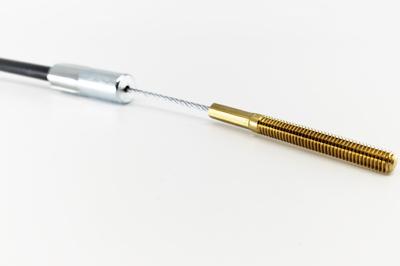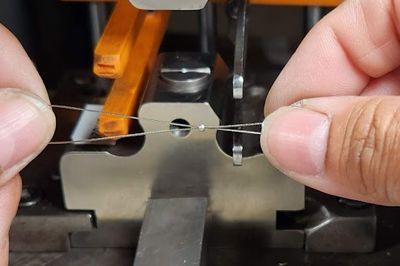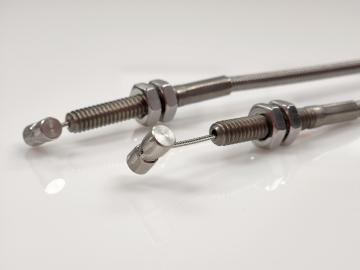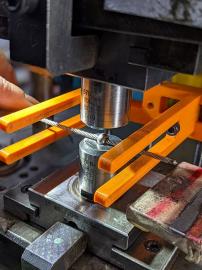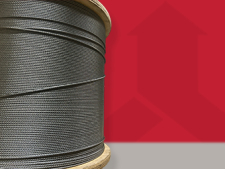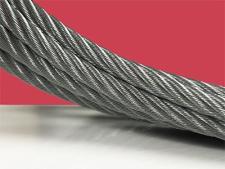Threaded plugs are among the most popular wire rope components used to terminate the end of a length of mechanical cable. These conventional cable fittings are typically produced from steel or brass, are stud-like in geometry, and possess a male thread on one end, and on the other, an unthreaded, cylindrical shape, often known as the shoulder, that contains a borehole for receiving a wire rope.
Because threaded plugs typically include a smooth, unthreaded cavity on one end, a mating length of wire rope is inserted fully into the cavity until it reaches the end of the borehole. Using a mechanical press, the threaded plug fitting is nested into a hexagonal die, where from there, the press strikes the fitting, where the wire rope is seated, until the fitting and cable are properly swaged together into a newly formed hexagonal geometry.
Sava's Threaded Plug Fittings
Trust Sava's 50+ Years of Manufacturing Expertise Application
However, caution should be considered when applying press forces to the threaded plug for two fundamental reasons:
Striking the threaded plug with too much force could damage components.
Too many pounds per square inch and the press may crack the fitting, damage the cable, or perhaps worse, cause both. Less obvious cosmetically, but as harmful a problem would be that the excessive forces could change the geometry of the fitting, or in some other way, cause an unapparent deformation to the fitting and/or the cable. When this happens, a potential failure in the field may result.
So, while the fitting could escape the press with seemingly invisible physical anomalies, the new threaded plug assembly could have become compromised in ways too subtle to spot without undertaking proper inspection techniques. This is why the forces applied to the cable fitting are precisely defined by the designing engineers to apply only the forces necessary to achieve the desired cable assembly strength.
Striking the threaded plug with too little force could compromise the integrity of the fitting.
A strict scientific metric known as a factor of safety is defined by engineers for each cable assembly produced. Typically, factors of safety are determined by the designer of the cable assembly undergoing production. So, for instance, if a cable assembly comprising a threaded plug fitting is meant to hold, let’s say, 30 lbs., the assembly isn’t ready to be deployed in a system until it achieves a factor of safety approximately five times greater than that -- or 150 lbs.
If the pounds per square inch applied to the pressing (swaging) process are inadequate to achieve such a required factor of safety, the cable assembly may prematurely fail in the field as well. And even if it were not to fail immediately, it could over time as components experience natural aging.
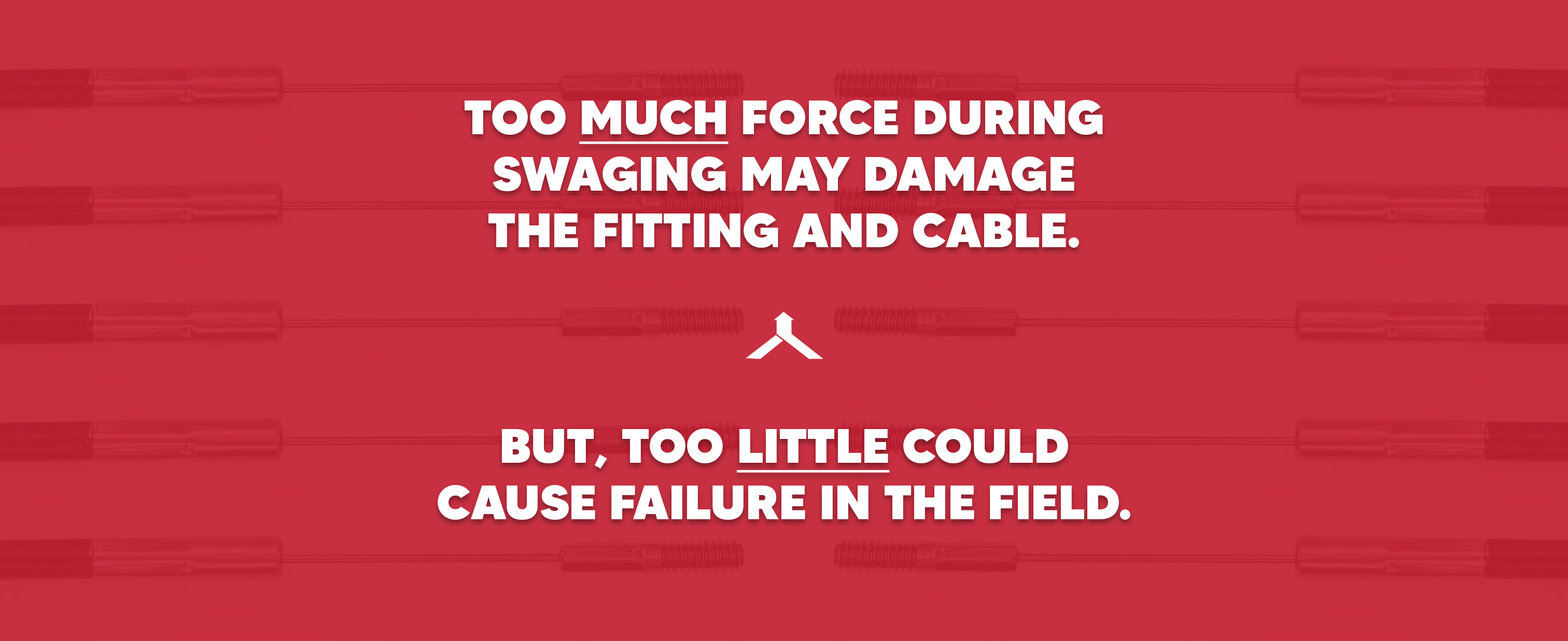

What’s more, the moment other variables are introduced, such as extreme climate, or oxidation, for example, those same insufficient forces applied during swaging could be even further exacerbated by such hostile environmental conditions.
Threaded Plug Cable-End Fittings: Common Use Cases
Commonly, threaded plug fittings are used in systems that involve tightening the assembly to a specific measure of tension. As mentioned, after a pressing operation, threaded plug fittings typically have a hexagonal nut formation on the female end. This fixed, nut-like geometry permits one to hold the assembly statically while a loose nut component is tightened or loosened, adding to or subtracting from the tension of the entire cable assembly.
Furthermore, in systems where other components are designed to interplay with the threaded plug assembly, having the ability to add or relieve tension to the cable assembly may inform a larger fitment requirement elsewhere within the same system.
Lastly, take gym equipment for instance. If the threaded plug assembly is designed to make a radius or perhaps even radii, the freedom to add or reduce tension to the cable assembly permits installers an easy time replacing the entire assembly when one has reached the end of life, and now needs to be replaced with a new assembly.
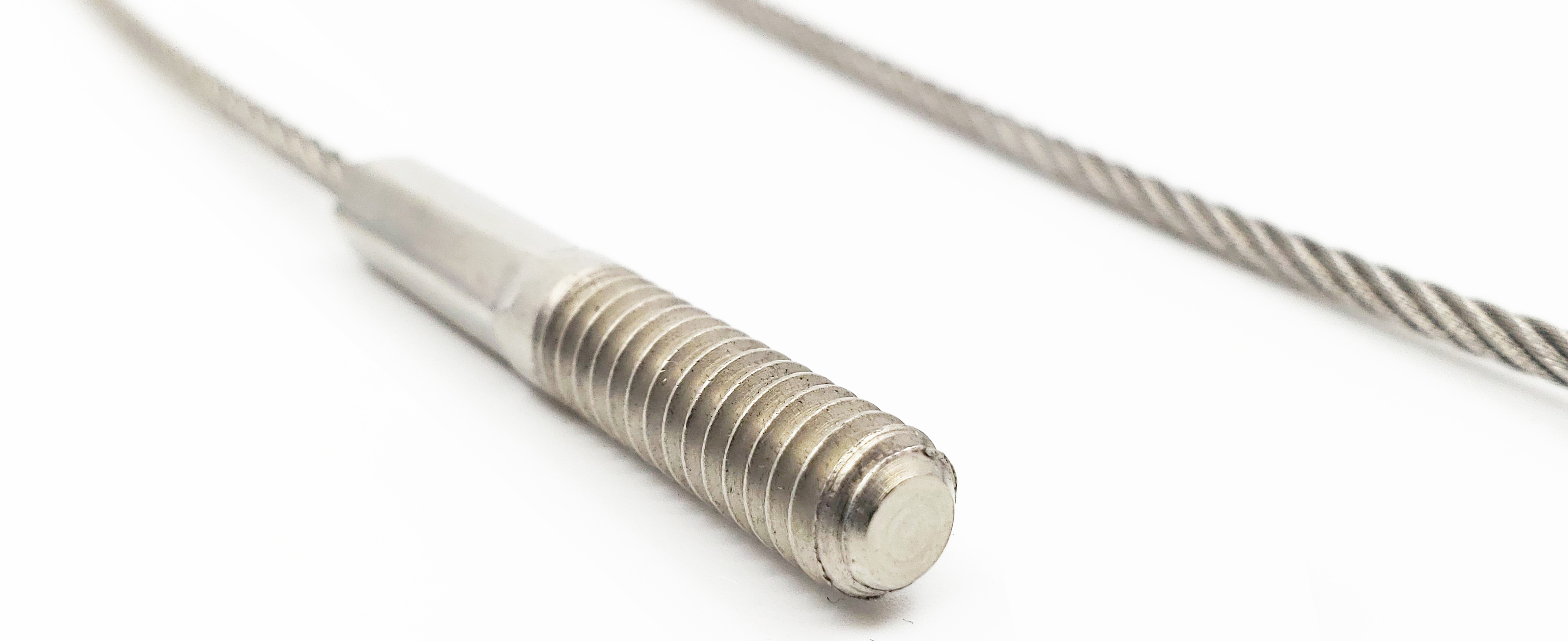

Accounting for Cable Stretch
Because the nature of a threaded plug fitting is to account for variability in either or both tolerance and tension, being mindful of cable stretch is critical to achieving a required factor of safety. After all, even if the cable assembly is swaged properly during a pressing operation, if the cable itself experiences stretch over time, the system will fail as slack is unexpectedly introduced.
Cable Constructional Stretch
Constructional stretch is a variety of wire rope stretch that is introduced to the cable during the cable manufacturing process. Once the cable has been stranded, it is put through a series of dies known as closing dies. After wire rope is produced, spaces between the cable’s wires exist as a naturally occurring event of the cable-making process. Oftentimes, these pockets of air or space are not of any concern to the cable’s function. However, when the assembly must achieve a precise length, also known as tolerance, even the slightest increase or decrease in length, can put the cable assembly out of specification for its mating system.
The inherent benefit to most applications using threaded plug fittings is that these cables are typically restricted to a well-defined range of motion, which means designing engineers have accounted for the stretch expected to occur in its system. Subsequently, design engineers most likely have already asked the cable manufacturer to prestretch (i.e., proof load) the cable accordingly prior to deployment in its system.
Cable Elastic Stretch
Wire rope of any kind will possess natural elastic stretch. Elastic stretch is a natural give the cable possesses up its yield point, or in other words, the point at which the cable will return naturally to its designed diameter and length. Elastic stretch that exceeds the yield point can introduce failures because any distension of the cable beyond its yield point will render the cable too long for the system for which it is designed.
When a cable is under a load that falls within its factor of safety, it has not reached its yield point and thus, is not at risk of stretching beyond a required figure.
For these reasons, it is vital that unwanted stretch is accounted for during the wire rope manufacturing process.
Threaded Plug Material Types
Threaded plug fittings are generally produced using stainless steel, zinc-plated steel (galvanized), or brass. Stainless steel threaded plugs offer an inherent environmental advantage over zinc-plated and brass alternatives because stainless steel contains chromium, which when exposed to oxygen, forms a protective layer of chromium oxide over the surface of the steel.
Additionally, stainless steel contains molybdenum, nickel, and nitrogen. Molybdenum and nitrogen help provide added protection from acidic contaminants, and the nickel lends to the fitting material’s overall strength.
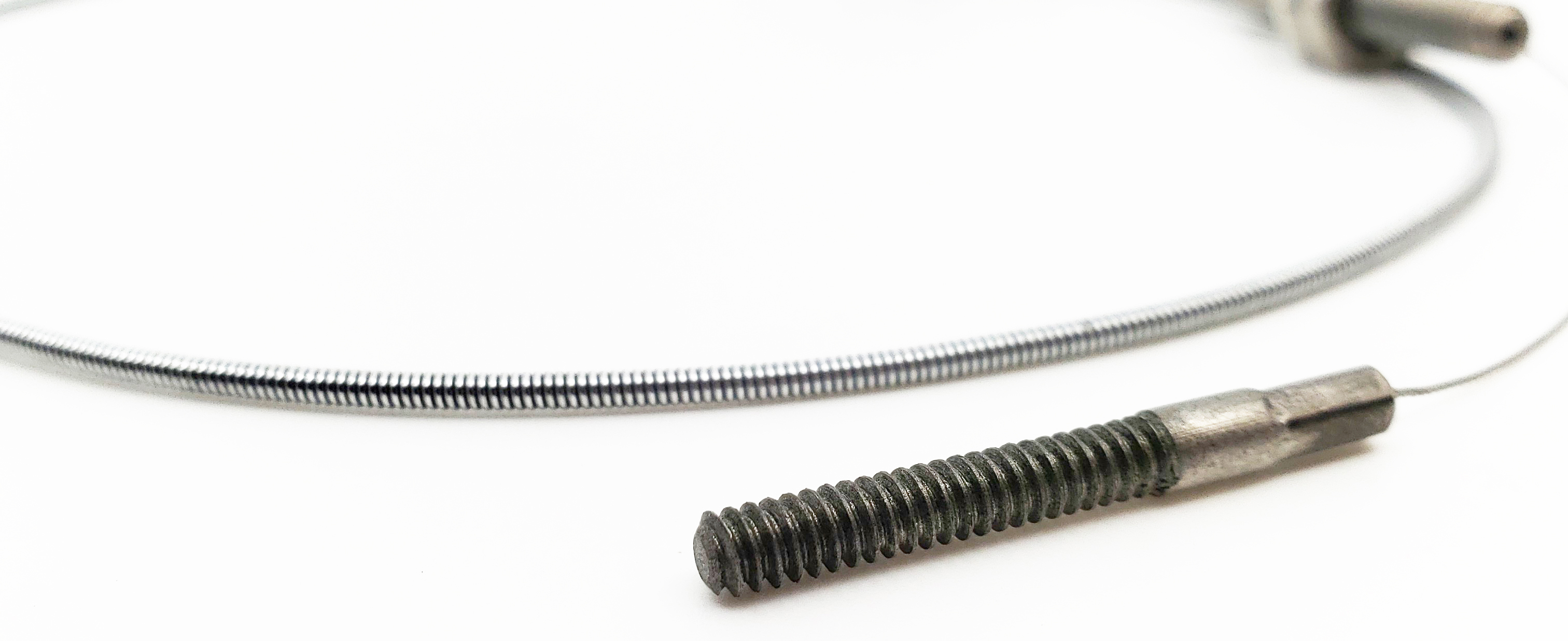

And although the zinc-plating in plated-steel threaded plug fittings does provide a layer of protection from harmful environmental factors like water, and later, rust, the zinc coating itself is only a few microns in diameter (0.0005 inches (0.0127 mm), putting the vulnerable steel surface beneath at risk of corroding in wet conditions.
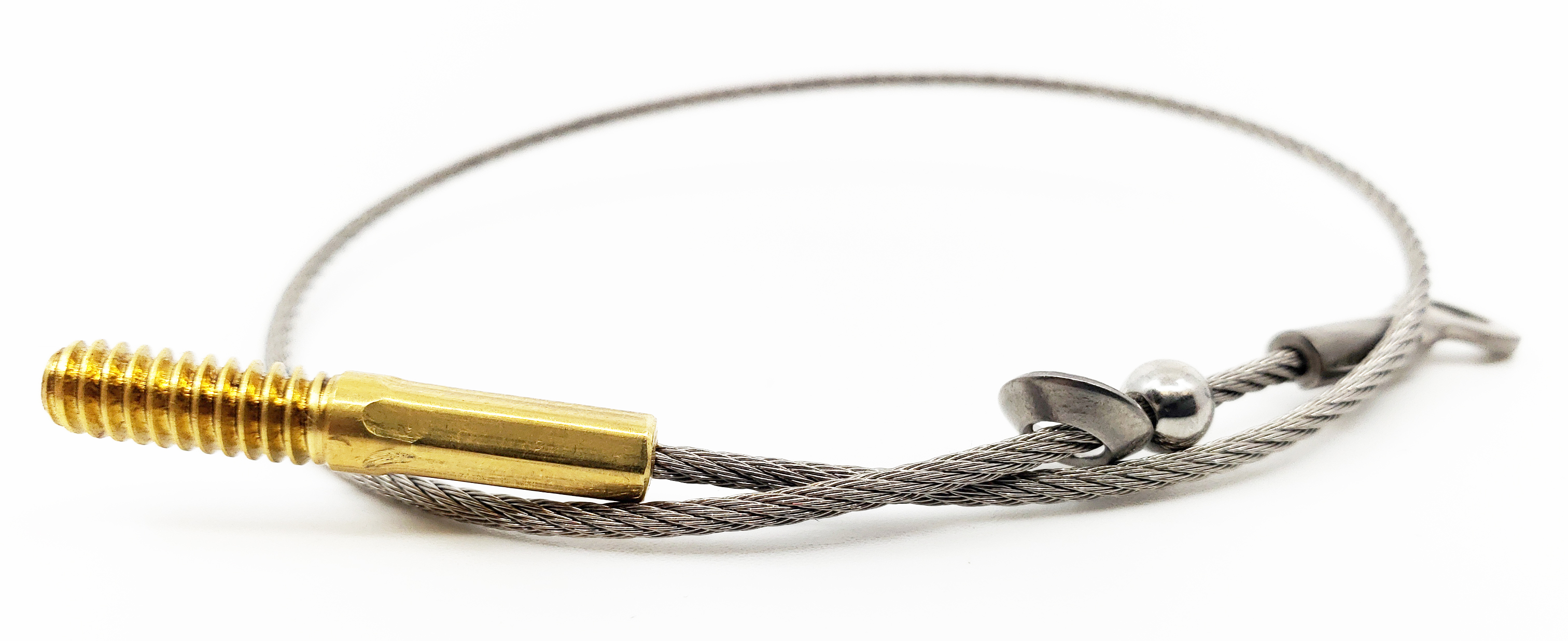

Brass doesn’t fare much better in comparable situations either.
Brass is comprised of copper and zinc, each of which are highly reactive to moisture. It’s also far softer than steel too, which can cause the alloy to patina over time. Combined, brass threaded plugs would not be an appropriate metal material for cable assembly applications where hard environmental conditions are present.
But for all of stainless steel’s benefits in moisture, both zinc-plated (i.e., galvanized), or brass-threaded plug fittings are worthy of applications where salt water and other potentially wet environments are not present.
Threaded Plugs: Specific Fittings for Specific Needs
When considering threaded plugs for your mechanical cable assembly, it’s essential to understand the unique motion control applications best suited to this wire rope fitting. For example, systems that require the ability to increase or decrease the tension that the assembly is under, like weightlifting machines, are ideal for threaded plug fittings. By comparison, using cable fittings that do not permit one to tighten or loosen a threaded component, will result in a cable assembly with a fixed length, and possess no sensitivity to system variability.
Be aware also that accounting for the stretch of the cable will inform the assembly’s success in the field. By performing a sophisticated manufacturing operation to remove the constructional stretch from the cable, manufacturers ensure that the cable will not exhibit unwanted elasticity when it's used in the field. But be aware that applying too heavy a load to the cable may place it outside its designed factor of safety, putting at risk the assembly or perhaps the entire system in which it is deployed.
Talk to Sava’s cable design engineers about your threaded cable end fittings requirements. For over half a century, our team of cable-making experts has ensured the world’s motion systems function without failure, wherever mechanical cable is used to achieve motion or support a load.

